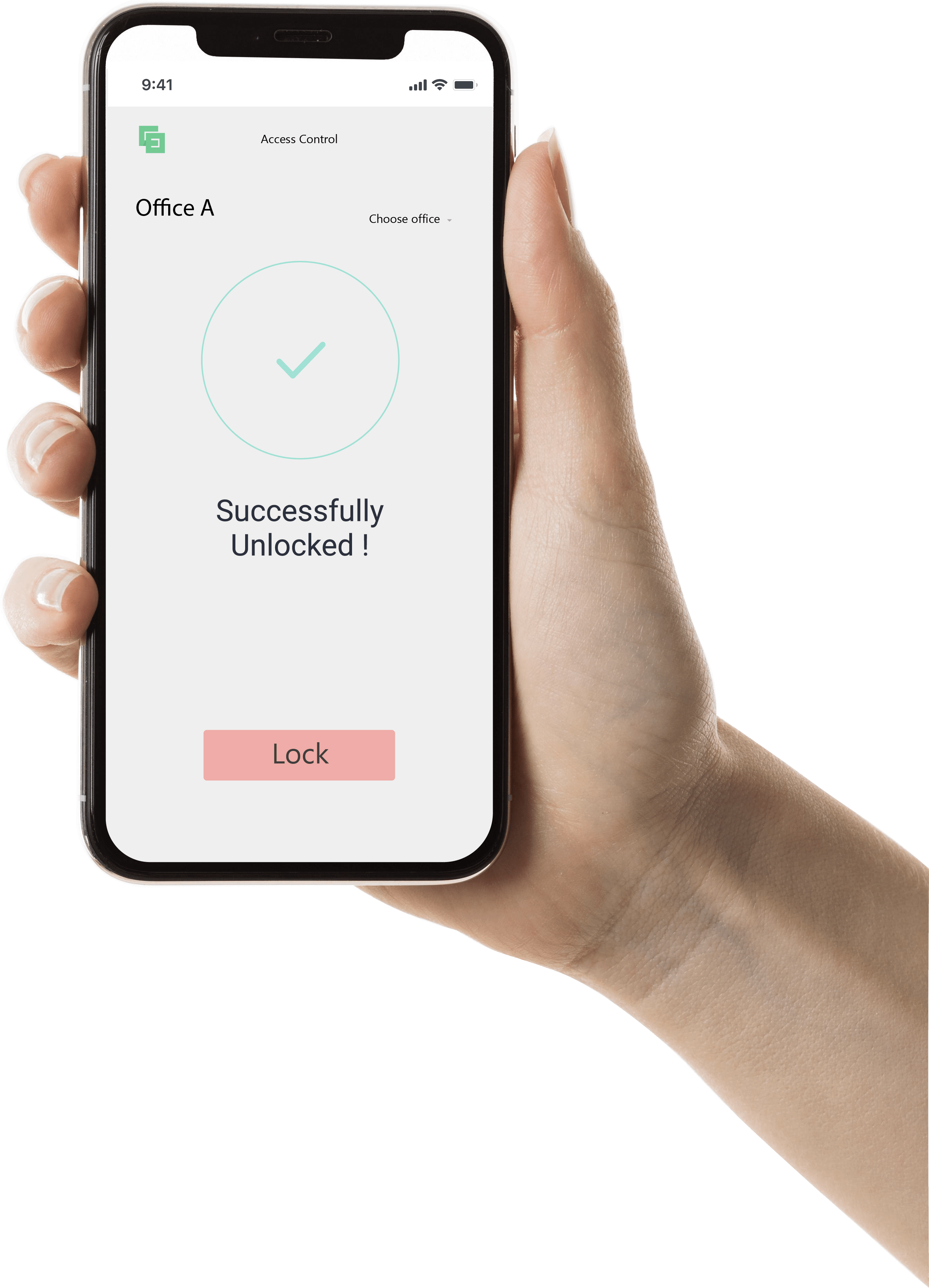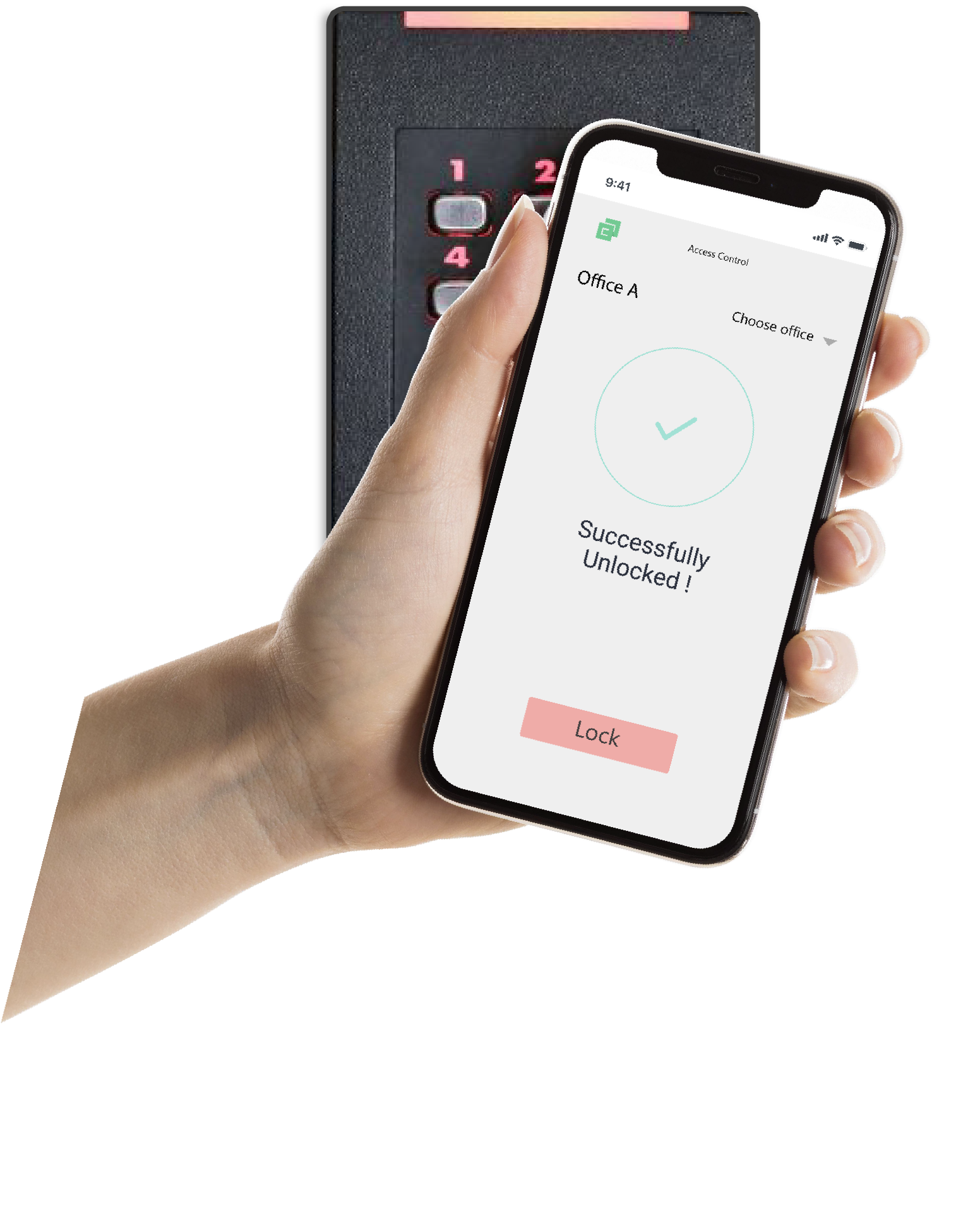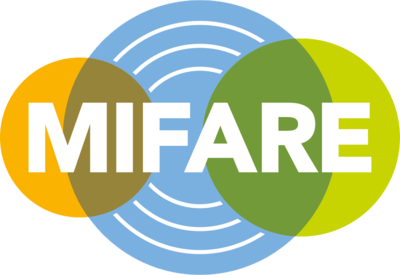
Mobile access control
Secure and easy access to your corporate premises
Being able to control who and when someone can access your company premises is of paramount importance for your businesses survival and for the safety of your employees. And if you choose to utilise a mobile access control system you benefit from not only increased door security but simple, centralised administration and a high level of user convenience.


How do mobile phone access control systems work?

An electronic door lock featuring an integrated reader provides or denies access based upon the information it receives. The users smartphone, installed with a corresponding application acts as a device which provides app based access control. When the transmitter (the users cellphone) and the receiver (the electronic door lock) are within range, contact between the two is established automatically. The app registers this and transmits a code to the access read. This uniquely identifies the sending device and opens the door.
Remote Access control is managed by a cloud-based backend. You specify exactly which employees should have access to which parts of the building and during which period. In addition, you can define further details of the electronic access control – for example whether the access control systems should open the door automatically or request that a user also enters a PIN.
RFID, NFC, Bluetooth Low Energy and Ultrawide Band - different technologies for contactless access control

Various technologies are available for implementing contactless access control systems. RFID technology (Radio Frequency Identification) uses radio waves to transmit a signal. The associated transponder or tag replies with a unique mobile key that enables authentication. Since it is also possible to use passive transponders without their own energy source, RFID access control is particularly suitable for chip cards. However, it can also be implemented with a smartphone.
Closely related to this is Near Field Communication (NFC) which is widely used for smartphone access control systems. Strictly speaking, this is a further specification of RFID technology. However, each device must have both a reader and an NFC tag. This means that the data for your door access control system can be exchanged in both directions. The range of this mobile credential is usually limited to a few inches, so you have to tap to unlock the door. This leads to a particularly high level of security for your NFC door lock.
A well-known example of this technology is Apple Wallet. This system was developed to store credit cards, boarding passes, entrance tickets and other authorizations on your smartphone. Main uses for Apple Wallet are contactless payment and access to an event via NFC technology. However, you can use this system to open the doors to your company.
It is also possible to use a smartphone’s integrated Bluetooth transmitter to unlock doors. In ideal conditions Bluetooth has a range of up to 30 feet. This increases convenience as users do not have to hold their phone directly to the locks and their devices can remain in the pockets.
One of the promising emerging technologies is Ultrawide Band (UWB). It allows to precisely define the distance with a half-inch tolerance. It is already actively used to unlock cars and slowly evolves to physical security market.
FAQ
RFID is a technical system that can be used to read and store data without contact. The data does not have to be seen or touched, as it is transmitted exclusively via radio frequency identification. An RFID system usually consists of a transponder and an RFID reader.
Bluetooth is a special method of transmitting data via radio. This eliminates the need for a cable connection between two devices. Bluetooth can transmit any type of data, including music.
NFC or “Near Field Communication” is a contactless data transmission that makes use of Radio Frequency Identification (RFID) technology. The globally standardized frequency is 13.56 MHz. Transmission ranges of around five to ten centimeters are possible.
Ultra-wideband (UWB, ultra wideband, ultra-wide band and ultraband) is a radio technology that can use a very low energy level for short-range, high-bandwidth communications over a large portion of the radio spectrum. UWB has traditional applications in non-cooperative radar imaging. Most recent applications target sensor data collection, precision locating and tracking applications. As of September 2019, UWB support has started to appear in high-end smartphones.
Mobile access control systems offer these advantages
If you provide access to your company building via mobile access control, you benefit from many advantages
PIN Number
Compared to access control systems that only use PIN number authentication, mobile access control offers greater security and ease of use. PINs can easily be passed between users and there are also many ways to spy on them. Additionally, PIN numbers are regularly forgotten and increased management is required during changes in staff.
Chip Systems
Compared to chip card systems, you benefit from the fact that your employees do not have to carry any other items with them. With BYOD (bring your own device) the integration of employees’ own smartphones is possible, thereby reducing hardware costs for the company. Nor is it uncommon for users to lose their cards which has both security and financial implications to the business.
Biometric Systems
Compared to biometric systems, you benefit from significantly lower costs. Fingerprint or iris scanners ensure a high level of security, but purchasing the hardware is associated with high costs.
Individual creation of apps for access control
At CoreWillSoft we create individual software for access control. In doing so, we first determine the security requirements of your company and the building’s existing automation components. On this basis, we develop a system that ensures excellent security in your company building and still allows your employees easy access.
With our in-house designed backend you can monitor and manage the entire system centrally and remotely, allowing you to control who and when users can have access. Meanwhile, we design the apps that your employees need for access using their handheld devices. Depending on your needs, we create these for both Android and iOS operating systems.
Partnership with leaders in secure credential issuing
Excellence in mobile access control
As an official partner of NXP Mifare®, LEGIC, and many other popular credential management backbones, we support customers and other partners with the development of sophisticated mobile applications based on a combination of existing and customer-specific technologies.
